The plants on this page are all edible varieties of Oilseed Rape, a kind of mustard plant. A genetically engineered version produces the seeds from which Canola oil is made (Canola is a low erucic acid rapeseed oil, originally known as Lear oil). While most rape grown worldwide is used to produce oil and animal feed, the edible varieties are very fine vegetables and are now widely available in North American markets serving Asian communities. They are particularly noted for the sweetness and tenderness of their stems.
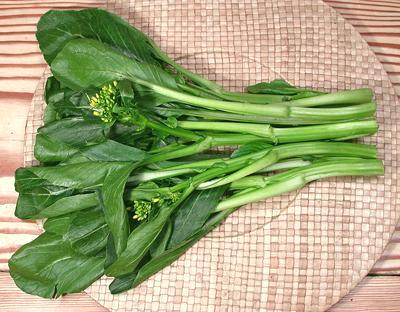 [Oilseed Rape, Chinese Spinach; Pak Kwang Tung Dok (Thai); Pak kaat som,
Pak kaat kiao (Laos); Yu Choy, Yau Choy (China); Nanohana (Japan);
Brassica napus]
[Oilseed Rape, Chinese Spinach; Pak Kwang Tung Dok (Thai); Pak kaat som,
Pak kaat kiao (Laos); Yu Choy, Yau Choy (China); Nanohana (Japan);
Brassica napus]
This is the commonly available variety of this family of plants, now available in most Asian markets. It is an excellent vegetable, particularly for stir fries because it cooks quickly and the stems, if not large, don't need to be separated from the leaves.
Flower heads are normal. Unlike Western broccoli they are not bitter and do not indicate the plant is past its prime. They are cooked right along with the leaves and stems. It doesn not keep long, larger leaves will start to yellow in a few days.
Some refer to Yu Choy as "Chinese Spinach", but that's not very accurate. Yu Choy does have a touch of sharpness but very much milder, and the flavor is definitely of the mustard family. The Thai name means vegetable from Guangdong, China, with Dok as a qualifier - there may be sub-qualifiers to that.
More on Asian Greens.
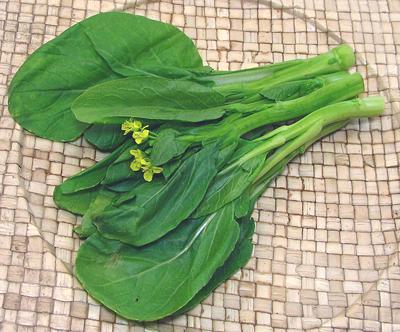 [Oilseed Rape, Chinese Spinach; Pak Kwang Tung Dok (Thai); Pak kaat som, Pak kaat
kiao (Laos); Yu Choy, Yau Choy (China); Nanohana (Japan);
Brassica napus]
[Oilseed Rape, Chinese Spinach; Pak Kwang Tung Dok (Thai); Pak kaat som, Pak kaat
kiao (Laos); Yu Choy, Yau Choy (China); Nanohana (Japan);
Brassica napus]This is the "mui" version of regular Yu Choy. It matures at a relatively small size. Mui Choys are popular because they are smaller and more tender, and can be cooked in different ways from the full size. These would be a candidate for steaming whole.
More on Asian Greens.
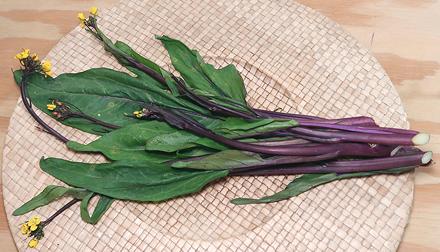 [Cai Tai, Hon Cai Tai, Caitai, Kosaitai (China); Brassica napus
var purpurea]
[Cai Tai, Hon Cai Tai, Caitai, Kosaitai (China); Brassica napus
var purpurea]
Yet another variety of Yu Choy, this one with maroon stems. It is very popular in the Chinese state of Hubei, but is still very rare here in Los Angeles. It can be used very much like the regular yu choy, which makes an acceptable substitute. I have seen photos from Hubei showing that it is grown quite large there. The maroon skin is peeled off the large stems and left on for the thin ones and flower heads. It is often steamed, which is the main cooking method in Hubei but is also stir fried. The leaves may be used in a different recipe from the stems.
This is a winter vegetable, and if planted in the spring it will bolt too soon. The photo specimens were purchased from a large Asian market in Los Angeles (San Gabriel) for 2020 US $2.99 / pound. They were up to 18 inches long with stems up to 0.6 inches.
More on Asian Greens.
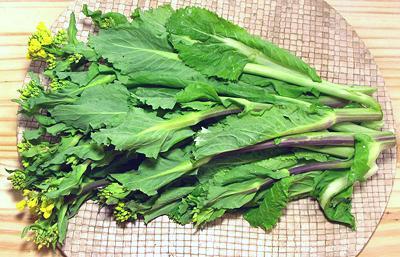 [Oilseed Rape, Yu Choy, Yau Choy (China); Brassica napus]
[Oilseed Rape, Yu Choy, Yau Choy (China); Brassica napus]
This uncomon variety was obtained from an Asian grower in Los Angeles. The photo specimens were 13 inches tall with stems about 3/4 inch diameter at the base. This variety was very sweet, but not as sweet as the Mongolian variety.
More on Asian Greens
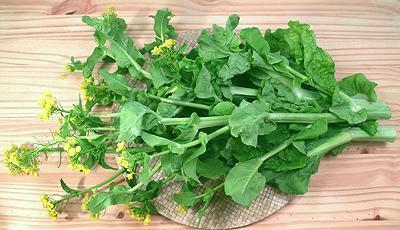 [Oilseed Rape; Yu Choy, Yau Choy (China); Brassica napus]
[Oilseed Rape; Yu Choy, Yau Choy (China); Brassica napus]
I don't know if they actually grow this in Mongolia, but it's definitely a less civilized cultivar than regular Yu Choy. Regular Yu Choy is quite sweet, but this is even sweeter - the stems are practically like candy. Unfortunately it is not yet common even in Los Angeles. The photo specimens were 25 inches tall with stems about 3/4 inch diameter at the base. They were obtained from an Asian grower in Los Angeles, and he's the one who told me it was called Mongolian Yu Choy. Photo © cg1
More on Asian Greens.
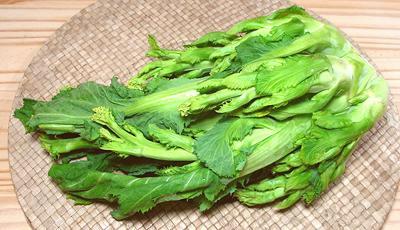 [Oilseed Rape, Brassica napus]
[Oilseed Rape, Brassica napus]
This is certainly a very strange version of Yu Choy (and very rare). The photo shows a single stem, 2-1/8 inches wide at the base, with smaller stems branching from it and very little leaf, yet this huge stem cooks up quickly and very tender. It is just a touch fibrous at the skin, but by no means does it need peeling. The stems are quite sweet, but not cloyingly so. It can be sliced up and used in any recipe where Yu Choy is appropriate, only the texture will change, Be careful not to overcook.
The photo specimen, purchased from an Asian market in Los Angeles was 11-3/4 inches high and weighed 1 pound 11 ounces. Its rarity is reflected in the price of US $2.78 per pound. It stores fairly well refrigerated, some of the larger leaves will yellow, but you aren't going to loose a lot there.
More on Asian Greens.
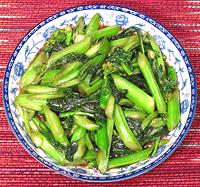 Cooked Yu Choy is a lot "stemmier" than other choys because the broad
leaves are very thin, but don't worry, the stems are very tender,
slightly sweet and very good eating. I recommend this vegetable alone
or with chicken and pork, but not beef, which could overwhelm the
delicate flavor.
Cooked Yu Choy is a lot "stemmier" than other choys because the broad
leaves are very thin, but don't worry, the stems are very tender,
slightly sweet and very good eating. I recommend this vegetable alone
or with chicken and pork, but not beef, which could overwhelm the
delicate flavor.
The Mongolian variety has thicker, more fibrous stems. Any over 1/4 inch should be cut into relatively short lengths and any over 1/2 inch should not be cooked, but can be eaten raw as a snack.
cb_yuchz 091229 - www.clovegarden.com
©Andrew Grygus - agryg@clovegarden.com - All
photos on this page not otherwise attributed are ©
cg1 - Linking to and non-commercial use
of this page permitted.